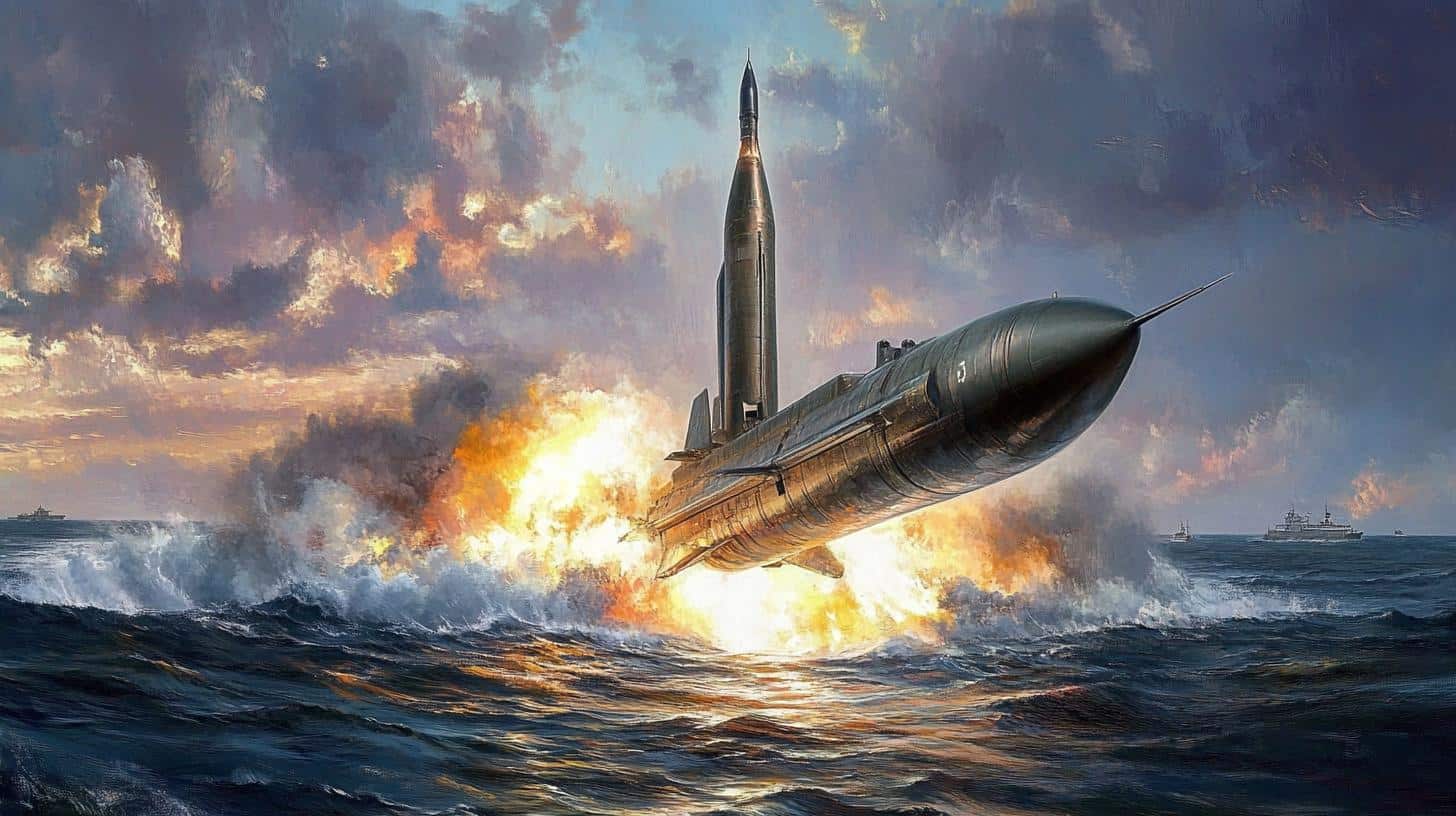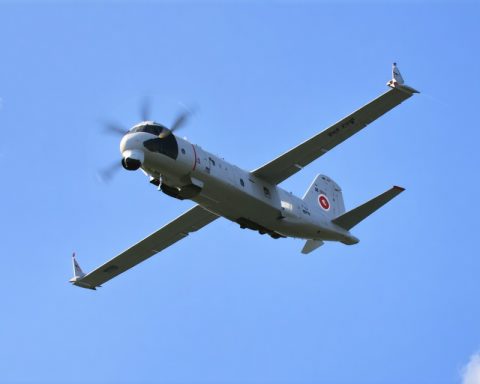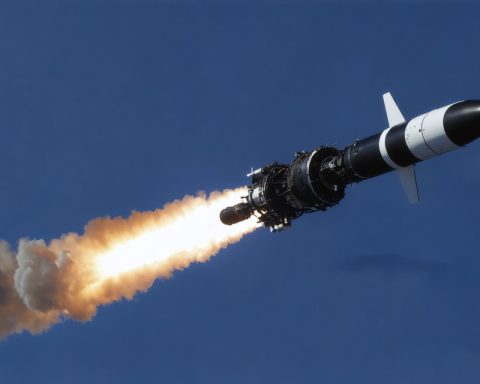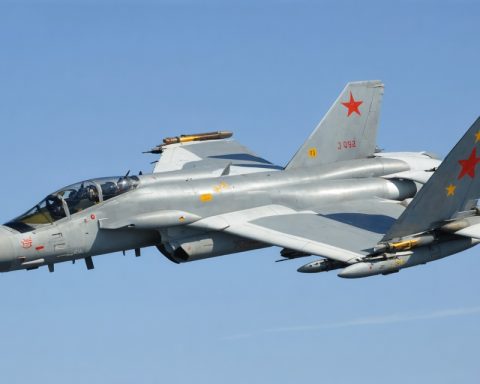The Yakhont missile, known in Russian as “Яхонт,” has long been a significant component in naval arsenals, underscoring its persistent relevance in maritime warfare discussions. Originating from Russian defense manufacturers, the Yakhont is the export variant of the P-800 Oniks, a supersonic anti-ship cruise missile designed with precision and lethality in mind.
Developed initially in the late 20th century, the Yakhont missile was engineered to target and neutralize sophisticated naval threats. Its ability to travel at speeds exceeding Mach 2.5 makes it a formidable adversary on the high seas, capable of overcoming modern air defense systems deployed by contemporary adversaries.
The missile’s design includes a sophisticated guidance system, which ensures a high degree of accuracy in striking designated targets. Its long operational range, potentially reaching up to 300 kilometers, allows for deployment from various platforms, including ships and submarines. This versatility enhances the missile’s strategic value for nations seeking to bolster their naval capabilities.
Despite being overshadowed by more recent developments in missile technology, the Yakhont continues to find relevance in discussions about maritime defense strategies. Its presence frequently acts as a catalyst for debates on naval security and regional stability, especially in contested waters. The missile’s enduring status is a testament to its original engineering prowess and the continued demand for effective anti-ship weaponry in global military circles.
The Yakhont missile’s ongoing presence in the defense sector is a reminder of the enduring nature of technological innovations in military arsenals, cementing its legacy as a key player in the domain of naval warfare.
Unseen Impacts of the Yakhont Missile on Global Naval Dynamics
Beyond its technical prowess, the Yakhont missile influences geopolitical landscapes and global naval strategies in profound ways. Notably absent from earlier discussions, these impacts reshape how nations perceive maritime security and defense cooperation.
Internationally, the Yakhont’s continued relevance affects diplomatic relationships and military alliances. Countries equipped with this capability gain thought-provoking leverage in negotiations, particularly in regions with contested maritime boundaries. This missile serves not only as a deterrent but also as a bargaining chip in diplomatic dialogues, creating a complex balance of power dynamics. Regions like the South China Sea and the Eastern Mediterranean are particularly sensitive to shifts in naval capabilities, prompting reconsiderations of national security strategies.
The potential proliferation of the Yakhont raises questions about technology transfer and arms control. While it remains predominantly in the hands of select nations, its availability on the international market is a point of concern. Could the dispersion lead to destabilization in already volatile areas? This is a valid debate among international security experts who warn of potential arms races triggered by such transfers.
What are the commercial and economic consequences? Defense contractors and nations invested in naval technology research may see opportunities in developing countermeasures, sparking innovation cycles that boost sectors related to missile defense systems.
For further reading on global naval strategies and defense technologies, you can visit Global Defense and Maritime Security. These resources provide insights into broader maritime security scenarios influenced by key technologies like the Yakhont missile.
The article has been updated. 2024-11-07 14:10
Here are some suggested related links:
1. Defense.gov – The official website of the U.S. Department of Defense, providing news and information about military advancements and strategies, including missile technology.
2. RUSI – The Royal United Services Institute, an independent think tank that focuses on defense and security studies, offering insights into naval warfare and missile systems.
3. Janes – A leading provider of military and defense intelligence, covering the latest developments in weaponry including naval missiles and their impact on warfare.
4. GlobalSecurity.org – A comprehensive source of information on military capabilities and strategies worldwide, including in-depth articles on missile systems like the Yakhont.
5. Lockheed Martin – One of the leading aerospace and defense companies, providing insights into missile technology and advancements that shape modern naval warfare.
6. BBC News – Military – Provides news and articles on military affairs, including naval engagements and missile technologies that play a crucial role in defense strategies.
7. Military.com – A prominent resource for military news and benefits, covering various aspects of warfare and technology including missile capabilities and implications for naval strategy.
8. Acquisition.gov – The official website for the U.S. Department of Defense’s acquisition programs, featuring information about missile systems and their importance in naval operations.
9. Naval Technology – A dedicated source for naval defense news, technological advancements, and analysis on systems like the Yakhont missile within the context of modern naval warfare.
10. Defense News – A leading source of news about defense industry developments, with coverage on missiles and their implications for naval and military strategies globally.
The article has been updated: 2024-11-08 05:32
What are the key features and impact of the Yakhont missile on modern naval warfare?
The Yakhont missile, also known as the P-800 Oniks, is a supersonic cruise missile that has significantly influenced naval warfare since its introduction. Key features include its high speed, advanced guidance systems, and the ability to target surface ships effectively, making it a formidable weapon in the naval arsenal.
One of the primary impacts of the Yakhont missile is its deterrent capability, as it poses a significant threat to enemy naval forces, thereby influencing naval strategy and deployment. Its capability to engage targets at long ranges, combined with its low-altitude flying which makes it harder to detect, has changed the dynamics of naval engagements. Furthermore, its proliferation to various countries has led to a shift in power balances in regional conflicts. The Yakhont’s continued evolution highlights its importance in contemporary naval warfare and the ongoing arms race in missile technology.












